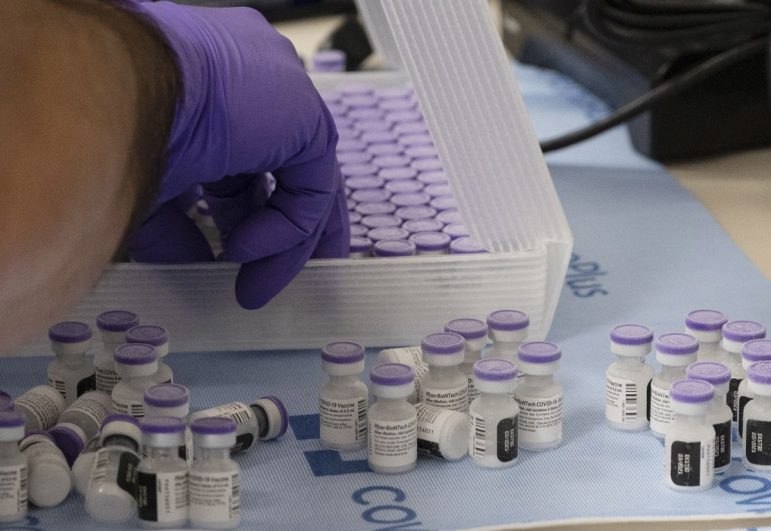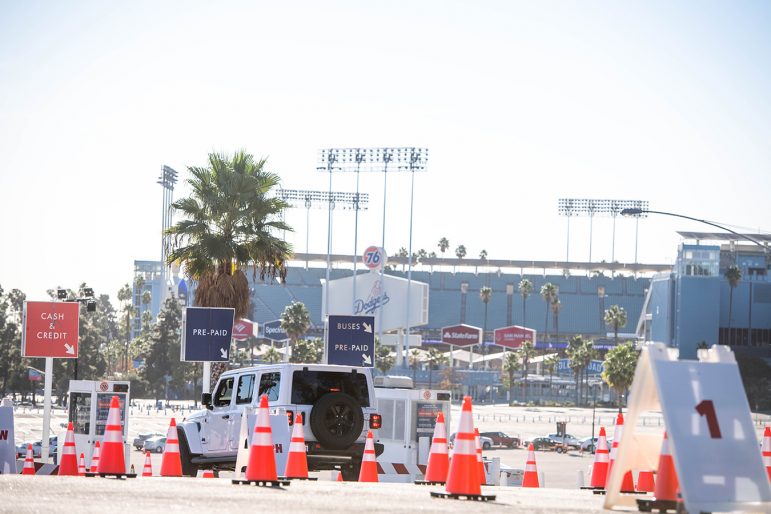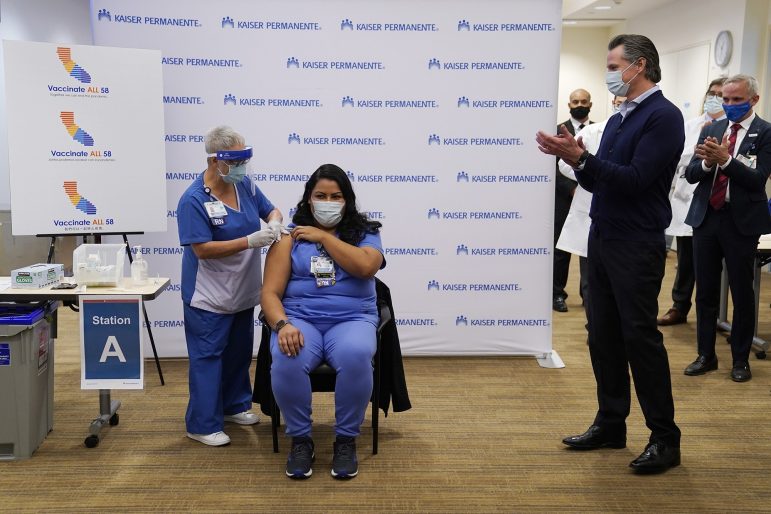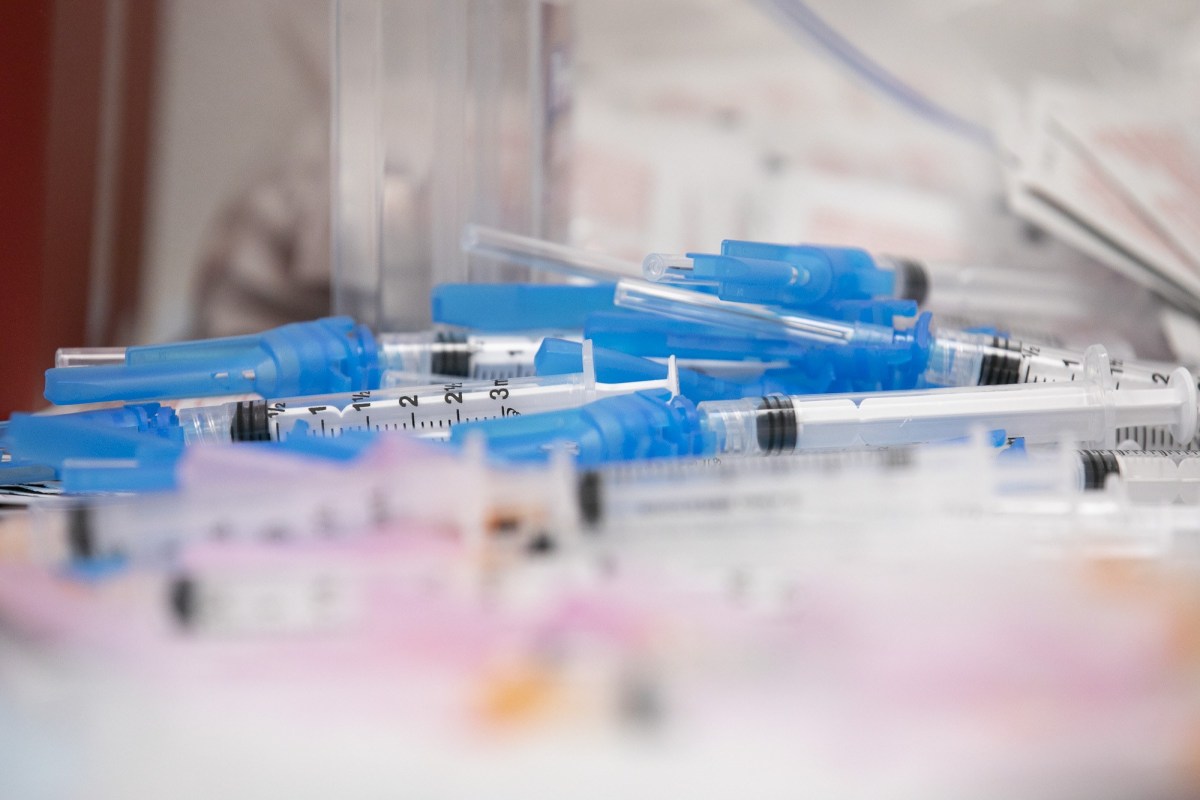With Californians growing desperate to protect themselves from COVID-19 and put the pandemic behind them, many want to know: where are their vaccines?
State officials have mostly pointed to insufficient federal supply as the culprit for a slower than expected vaccine rollout. About 4.7 million doses have been sent to the state, not including what’s sent for long term care facilities via a federal pharmacy partnership. But as of late Thursday, 1.8 million doses, or about 40%, had not yet been administered, according to a state vaccine dashboard.
California’s vaccine rollout per capita has been among the slowest in the country and state officials can’t say where unused doses are, whether they are reserved for upcoming appointments or whether they are sitting in freezers unnecessarily. The state announced this week that locally controlled distribution of the vaccine isn’t working. Instead, it will contract with Blue Shield to coordinate delivery statewide and speed the process.
“We understand that vaccine supply is limited. But we also need to address that the supply we have now needs to get administered as quickly as possible, so we’re developing an approach that allows us to do just that,” Yolanda Richardson, the state’s government operations secretary, said earlier this week.
Blue Shield will be what the state calls a “third party administrator.” It won’t inject shots into people’s arms, but rather will allocate doses to health providers and local health departments.

Blue Shield declined to provide a spokesperson to answer questions about how it will improve vaccine delivery. Instead, it released a statement that said, “Blue Shield’s role will be to maximize the speed at which vaccinations are made available across California with a focus on disparately affected communities.”
This new vaccine delivery system, which will take several weeks to roll out, is supposed to provide the state a clearer picture of what’s happening on the ground.
It’s the on-the-ground coordination that has been complicated.

To date, the state’s vaccine allocation has been divided among local health departments, seven major health systems, the department of state hospitals and the Department of Corrections. How much vaccine each system or department is given is based on its eligible population — which is made up of mostly health care workers and people aged 65 and over.
Local health departments in 58 counties and three cities further split their cut of doses with local providers, including pharmacies and clinics, that distribute shots at their own pace. Hospital systems report orders to the state, but get their doses directly from Pfizer and McKesson, the intermediary for Moderna, and county officials do not always know how many doses their large hospitals have.
This decentralized approach hasn’t worked for California. Rules vary by county, causing confusion. And without strong singular oversight, it’s been impossible to ensure efficiency and speed.
“We do a lot with our counties, which I think is a strength in California. But in this case, it was a challenge for administering the vaccine as quickly as we possibly could,” Dr. Nadine Burke Harris, the state’s surgeon general, told NPR this week.
Aside from overall supply and delivery issues, the state also has been dealing with data issues. “We don’t really have a way to track vaccines sitting in the freezer,” said Kat DeBurgh, executive director of the state’s health officers association.
“What we do know is some are sitting in the freezer with a name because of an appointment for next week,” she said. Many of the doses not yet administered are accounted for, but how many is unknown.
Without concrete data, the state cannot identify delivery bottlenecks or know whether providers are hoarding vaccines or just not entering data in the state’s vaccine registry in a timely manner.
The Blue Shield deal is just one step the state is taking to improve vaccination delivery. It recently rolled out the My Turn website, where people can sign up to learn when they qualify for vaccinations and schedule appointments. This system, in turn, will automatically provide data to the state so it can better track inventory and reduce data lags.
A state dashboard already tracks total doses administered, assigning them to the vaccinated person’s county of residence. But it does not show what percentage of a county and health system’s supply has been administered.
Darrel Ng, spokesman for the state’s public health department, said the state has been working to identify vaccination bottlenecks, but credited health systems with doing a good job of getting vaccines out quickly.
As of Wednesday, Kaiser Permanente, the largest health system in the state, had administered 305,000 doses to health workers and patients — about 10% of the doses administered in the state, not counting nursing homes. But it could administer up to 250,000 a week if it had the supply, Marc Brown, a Kaiser spokesman said. Kaiser will help Blue Shield with the new vaccine delivery network.

Of course it’s a lot easier for health systems than for counties to distribute the vaccine quickly because they’re dealing with a specific audience — their workers and patients who they can easily reach, DeBurgh said.
While speed is important, good delivery is also about being equitable, and that’s a balance the state and Blue Shield will have to find, she said. “You can’t just give more vaccines to those who do it faster, it’s also important to reach communities that don’t have transportation or easy access to health care,” she said.
Some local officials are cautiously optimistic about the state’s new plans.
“I think in any response when you bring in additional resources that is a plus,” said Joe Prado, Fresno County’s health division manager. “But if you don’t coordinate well, and you don’t really get a focus plan together in line with the locals, then it can become inefficient.”
